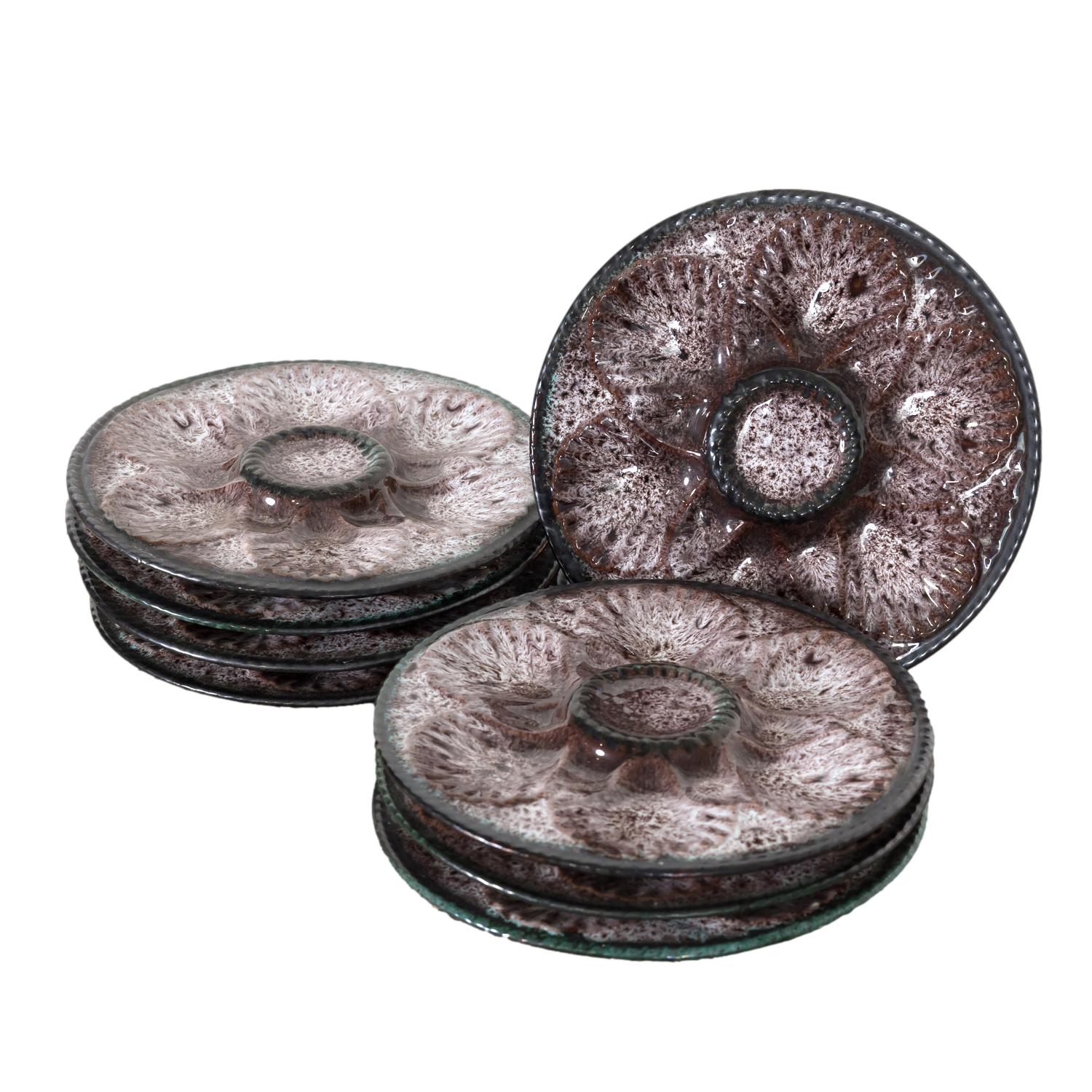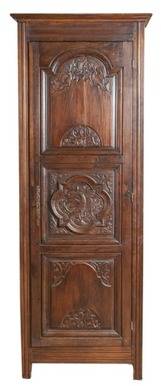
Whether you're new to the world of antiques or a connoisseur with a curated collection, Lolo's A to Z Glossary of French Antiques
furniture terms with photographs and illustrations is an essential tool that will help educate and enlighten you.
M
maie: Chest with lift up top that was used to store food or grain in the French farmhouse.
mahogany: Straight grained hard wood with silky texture, ranging in color from salmon-pink through bright red and when newly cut, changes to a golden or deep brown red.
majolica: Pottery coated with a tin enamel and painted with bright colors. Originally an Italian pottery, its French counterpart is called barbotine.
malachite: An opaque green mineral with very pronounced and often concentric banding. It's surface is hard enough to be polished and malachite has been used for beads, cabochons, decorative items and pietre dure.
mantel: The projecting shelf surmounting a fireplace.
marks: Porcelain and pottery usually have signs of origin applied to the piece either in underglaze blue, impressed, incised, or painted above the glaze which generally indicate the manufacturer. Some pieces also contain marks denoting the artist and date of the piece.
marquetry: A decorative technique of making patterns with wood, mother of pearl, tortoiseshell, or ivory inlaid piece by piece into a wood surface in an intricate design and veneered to another surface. Often showcases the contrasts between different species of wood. Shapes such as scrolls, leaves, flowers, birds, and insects were used to form a pictorial composition. Started as a technique with Dutch craftsmen and quickly spread to France during the reign of Louis XIV.
marquise: An extra wide French bergère or armchair built to accommodate the wide skirts of the Louis XV period. A bergère with a low coved back that sweeps without a break into the armrests.
mascaron: The head of a fantastical man, woman, or animal.
mask: A human face, frontally displayed and without caricature or exaggeration.
medallion: A round or oval decorative element containing a motif. In chairs, a round or oval back.
Meissen: Manufacturers of true porcelain whose wares remain unrivaled in terms of innovation and beauty. Meissen is the name of the small town in which alchemist Johann Friedrich Bottger was imprisoned by the King of Saxony where he remained for several years until 1710 when he finally discovered a formula for true (hard-paste) porcelain.
menuisier: A furniture maker specializing in frame furniture and solid wood furniture in the 18th and 19th centuries.
meridienne: A sofa with one arm higher than the other.
meubles: The French name for furniture.
millefiori: A type of glassware in which multi-colored glass pieces are put in rosette or floral designs and embedded in clear glass. The word literally means "a thousand flowers" in Italian.
minaudiere: First crafted by the legendary firm of Van Cleef and Arpels, the minaudiere gave fashionable women a convenient, yet sophisticated, way to carry their basic travel necessities. These lovely, ornamental cases carried cosmetics, jewelry, or other personal items, varied in size and material, and were often worn as handbags.
molding: In architecture, furniture, and decorative objects, a surface or group of surfaces of projecting or receding contours. A molding may serve as a defining element, terminating a unit or an entire composition (e.g., in the cap of a column or the crowning cornice of a building), or establishing a boundary or transition between portions of a design. One of the primary considerations in the design of a molding is the type of shadow it will cast. The shape of a molding is termed its profile or section.
monastery table: A long and narrow table usually having stretchers close to the floor. Used in monasteries for the monks to take their meals. Also referred to as a refectory table.
monteith: A vessel used for the rinsing and cooling of wine glasses, named after a Scotsman named Monteigh whose cloak hem resembled the scalloped edge of the bowl. The rim has notches that allow the stem of a wine glass to be suspended by its base so that the wine glass bowl can be submerged into ice water. This allows the bowls to cool in the water while the base remains dry. When the monteith was introduced in the late 17th century, diners did not have their own glass at the table. They would signal for a full glass to be brought by the server and once the glass was empty, it would be collected by the server and rinsed and cooled in the monteith until the next guest called for a glass of wine.
mortise and tenon: A hole cut in a piece of wood and intended to receive a tenon projecting from another piece of wood.
mother of pearl: Iridescent white inlay composed of the highly polished pearly lining of certain seashells.
motif: The distinctive feature or element of design or ornament used by furniture designers during specific periods through history.
mottled: In veneers, the spotted, speckled or blotchy figures.
mount: An ornamental attachment typically of gilt bronze. Gilt bronze furniture mounts were first used in France on a limited scale during the second half of the 17th century and experienced a heyday during the 18th century. Primary function was to protect the wood against damage from being knocked about or moved in carts from one residence to the next. The escutcheon framing the keyhole would prevent the key from scratching the veneer, and handles allowed access to the drawers. Gilt bronze mounts helped to emphasize the outline of a piece of furniture, which became especially important during the Rococo period with its preference for serpentine shapes. During the late Baroque and Rococo periods, the mounts added a lively, sculptural element, while during the Neoclassical and Empire periods they became more decorative, reaching the refinement of jewelry.











